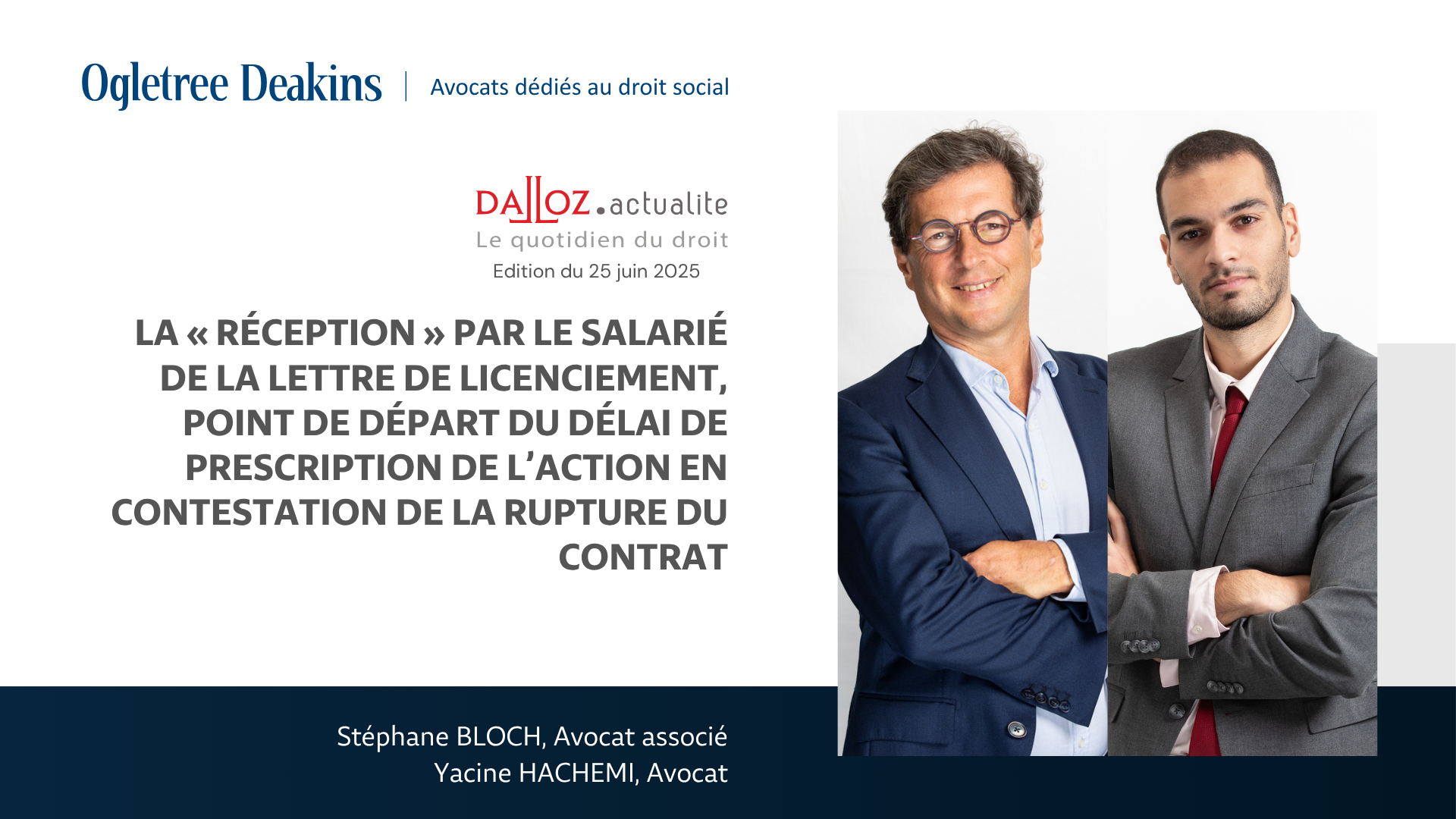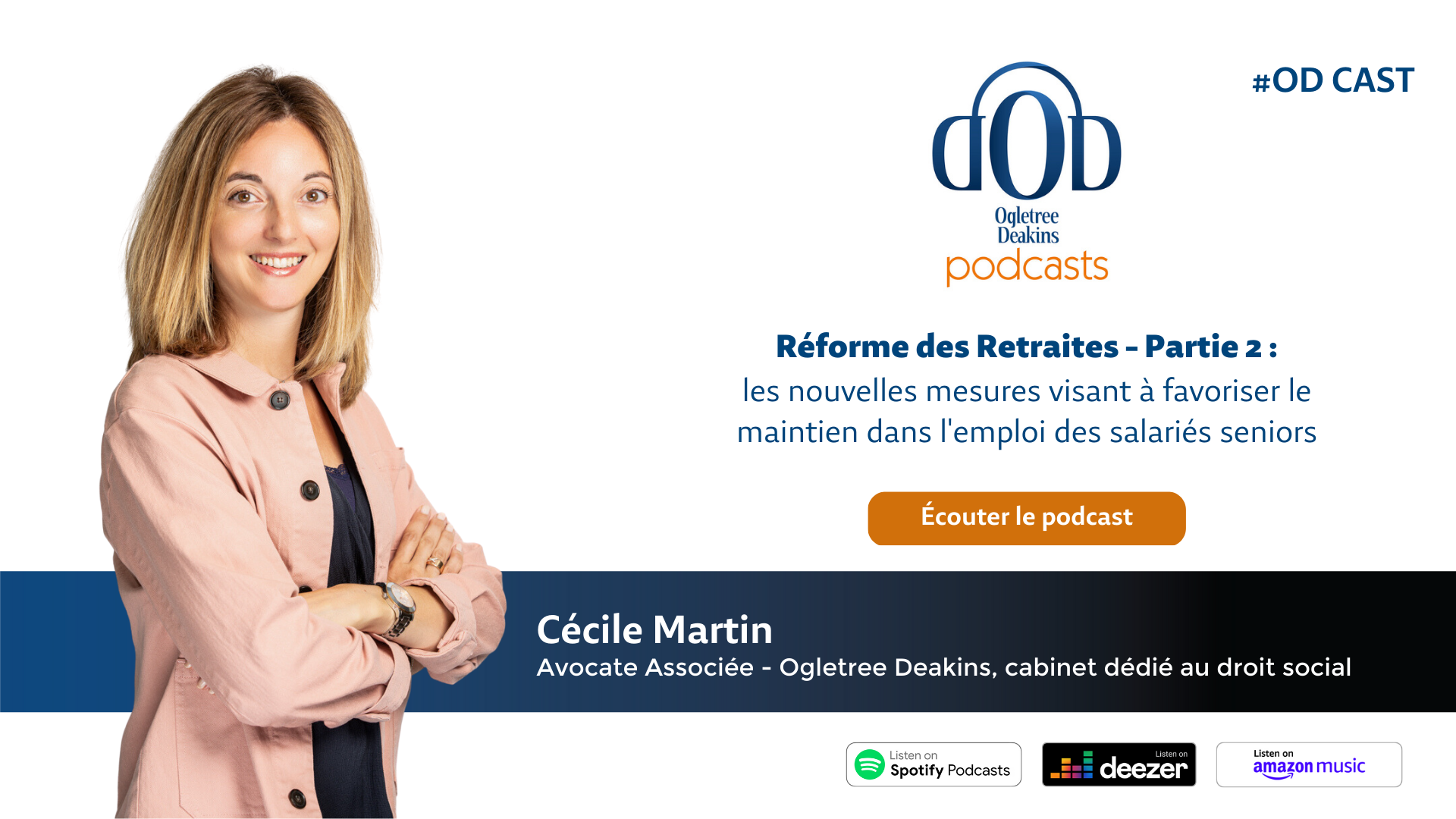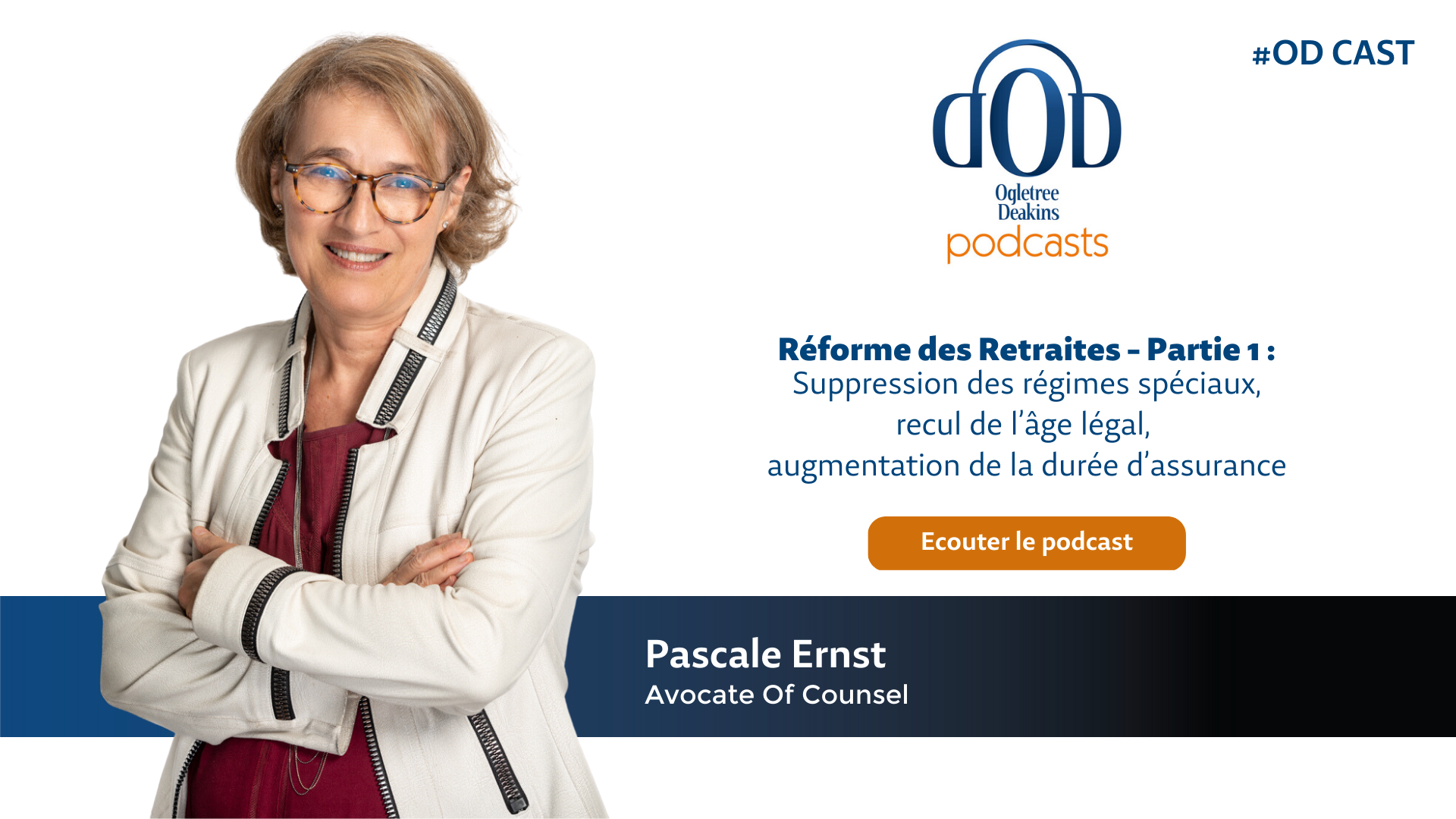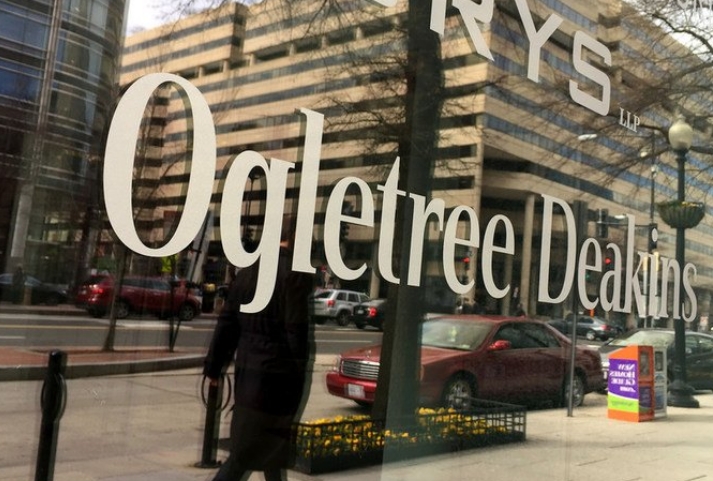
TEST widget
- test widget
- test widget
- test widget
test citation
exemple citation
accordion case test widget

Card Title
Card text goes here. This may detail a concept or refer to linked content. Add a link to view the Call to Action below this text.

Card Title


Card Title
Card text goes here. This may detail a concept or refer to linked content. Add a link to view the Call to Action below this text.
Card text goes here. This may detail a concept or refer to linked content. Add a link to view the Call to Action below this text.

First Card
Card text goes here. This may detail a concept or refer to linked content. Add a link to view the Call to Action below this text.

Second Card
Card text goes here. This may detail a concept or refer to linked content. Add a link to view the Call to Action below this text.

Third Card
Card text goes here. This may detail a concept or refer to linked content. Add a link to view the Call to Action below this text.

First Card
Card text goes here. This may detail a concept or refer to linked content. Add a link to view the Call to Action below this text.

Second Card
Card text goes here. This may detail a concept or refer to linked content. Add a link to view the Call to Action below this text.

Third Card
Card text goes here. This may detail a concept or refer to linked content. Add a link to view the Call to Action below this text.

Client Portal
Client Portal
Looking to manage your compliance efforts, get a multi-jurisdictional view of up-to-date employment laws, build an employee handbook, have practical legal templates at your fingertips, and save time?
The Ogletree Deakins Client Portal is our new platform designed to ensure you stay current on employment and compliance matters.
Get real-time updates on complex and changing laws, current benchmarking data, interactive data visuals, and hundreds of customizable templates on the Ogletree Deakins Client Portal. Log in from any device and tailor it to your needs. For more information, attend a 30-minute demo or reach out to clientportal@ogletree.com.
Life at Ogletree


Life at Ogletree
Key Team Members

Tim Fox

Kegan Reiswig
Diversity, Equity, and Inclusion

Diversity, Equity, and Inclusion
FY 2025 Reconciliation Bill Signed Into Law With Significant Immigration Provisions
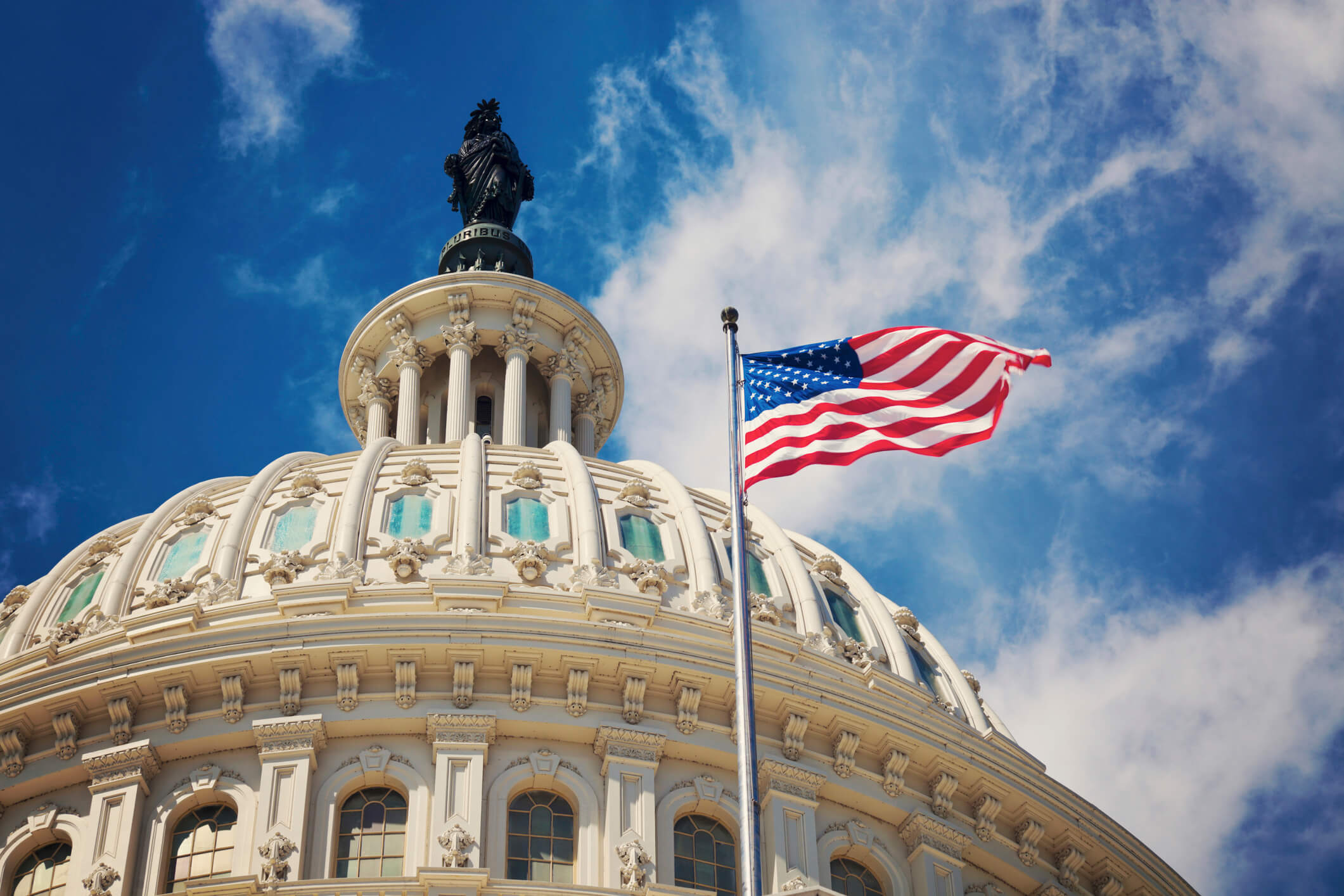
Quick Hits
- The One Big Beautiful Bill Act (OBBBA) was signed into law on July 4, 2025, introducing significant changes to immigration policy, including new and increased fees for humanitarian-based applications and employment authorizations.
- The legislation imposes a new “visa integrity fee” and raises other travel-related fees, impacting visa applicants and frequent travelers.
- The OBBBA also allocates substantial funding for border security and enforcement, including increased resources for border infrastructure, detention facilities, and Immigration and Customs Enforcement (ICE) operations.
- Employers will face higher administrative burdens and compliance risks due to more frequent I-9 reverification processes and potential workforce disruptions.
Analysis and Impact
New and Increased Fees
The OBBBA introduces new fees and increases existing ones, while reserving the right for the U.S. Department of Homeland Security (DHS) to establish higher fees than those indicated in the law. The OBBBA also requires annual inflation adjustments.
Humanitarian-Based Applications and Employment Authorization–Related Fees
In keeping with President Trump’s campaign promises to curb humanitarian-based immigration, the OBBBA implements various fees for applications related to asylum, parole, and temporary protected status (TPS). Key fee updates are summarized below.
| Fee Type | Current Fee | New Fee | Waiver/Reduced Fee? | Notes |
| Asylum Application | None | $100 | No | Initial and annual |
| Parole Application | Varies: $0–630 | $1,000 | No | |
| TPS Application | $80 | $500 | No | |
| Initial EAD: Asylum, Parolee, TPS | $0–$520 | $550 | No | Max 1-year validity |
| Renewal EAD: Asylum, Parolee, TPS | $0–$520 | $275 | No | Max 1-year validity |
Additionally, the OBBBA introduces new work authorization limits for parolees and TPS holders, who will be limited to receiving employment authorization for the shorter of one year or the duration of the parole/TPS period. This will require individuals to closely monitor employment authorization, coordinate timely renewal, and incur additional fees more frequently. In addition, employers will need to undertake I-9 reverification more frequently.
Visa and Travel-Related Fees
The OBBBA also introduces a “visa integrity fee” of $250 for visa applicants, alongside increases in other travel-related fees. The fee for applying for an I-94 Arrival/Departure Record at a land point of entry will rise from $6 to $24, and may be expanded to additional applicants in the future; the cost for the Electronic System for Travel Authorization (ESTA) will jump from $4 to $13; and the fee for the Electronic Visa Update System (EVUS) applicable to certain Chinese nationals with ten-year B1/B2 visas will increase from $8 to $30.
The visa integrity fee is a new fee that will be paid in addition to the regular visa application fee at the time of the consulate’s visa approval. The initial amount for fiscal year (FY) 2025 will be $250, but it may be increased by the secretary of homeland security and adjusted annually for inflation. The fee will apply to all nonimmigrant visa applications, and no waiver/reduction will be permitted. This more than doubles the cost of petition-based visas (H, L, O, P, Q, R) from $205 to a total of $455.
Reimbursement may be available after the expiration of the nonimmigrant visa validity period if the individual demonstrates compliance with all conditions of the nonimmigrant visa and either: (a) has not sought to extend the period of admission and has departed the United States within five days of the expiration; or (b) was timely granted an extension/adjustment to lawful permanent resident. The OBBBA does not specify how the reimbursement process will work.
Increased Funding for Enforcement
The OBBBA allocates substantial funding to the DHS for border security and enforcement, including tens of billions of dollars for border infrastructure, wall construction, border inspection equipment, and the hiring of Border Patrol agents. Additionally, the law earmarks $45 billion for expanding immigration detention facilities for both adults and families, significantly increasing ICE’s detention budget and capacity. ICE also receives nearly $30 billion for enforcement and deportation operations, as well as the hiring and training of new officers.
Conclusion
The OBBBA will primarily impact individuals seeking humanitarian-based immigration benefits. However, employers are likely to face higher administrative burdens, potential workforce disruptions, and increased compliance risks. The newly shortened employment authorization periods mean that employers will need to conduct reverification processes for parolees and TPS holders more frequently and may face disruptions as applications surge and processing backlogs form. Expanded enforcement funding may also result in more frequent and rigorous worksite inspections and I-9 compliance audits.
For impacted employees, higher fees for asylum, parole, TPS, and related work authorizations pose financial challenges, while new rules increase the risk of abrupt job loss. Additionally, increased travel costs from the new visa integrity fee will affect frequent travelers.
Ogletree Deakins’ Immigration Practice Group will monitor developments with respect to these and other policy changes and will provide updates on the Governmental Affairs and Immigration blogs as additional information becomes available.
This article and more information on how the Trump administration’s actions impact employers can be found on Ogletree Deakins’ New Administration Resource Hub.
Follow and Subscribe
LinkedIn | Instagram | Webinars | Podcasts
Beltway Buzz, July 11, 2025

“One Big Beautiful Bill Act.” On July 4, 2025, President Donald Trump signed into law the massive legislative package that encapsulates Republicans’ priorities on taxation, energy production, healthcare, and immigration enforcement. Here are the key provisions for employers:
- No Taxes on Tips and Overtime. The legislation provides tax deductions for “qualified tips” (capped at $25,000) and overtime pay (capped at $12,500). Both of these provisions phase down based on income levels starting at $150,000 ($300,000 for those filing jointly). These provisions will expire on December 31, 2028, unless extended by the U.S. Congress. Victoria L. Vish and Stephen Kenney have the details.
- AI Moratorium. In a 99–1 vote, the U.S. Senate approved an amendment striking language included in the House-passed version that essentially banned states from regulating artificial intelligence for a period of ten years.
- Immigration
- Enforcement. The new law earmarks approximately $170 billion for immigration enforcement measures. This includes funds to further construction of the wall along the southern border, build new detention centers, hire Customs and Border Protection personnel and construct their facilities, deploy new technology, and to reimburse local governments for their immigration enforcement activities.
- Fee increases. Establishes new—or increases existing—costs relating to various immigration processing fees, primarily for asylum applicants, parolees, and temporary protected status (TPS) recipients. For example, the legislation sets a $550 work authorization fee for asylum applicants, parolees, and TPS recipients. Also included is a $250 “visa integrity fee,” adjusted yearly for inflation, that is required to be paid “by any alien issued a nonimmigrant visa at the time of such issuance.” The fee is to be reimbursed after the visa’s period of validity if the individual demonstrates compliance with the terms of the visa.
- Employee Benefits
- Healthcare. Among other provisions, the legislation allows high deductible health plans to cover telehealth services before meeting the deductible and permits health savings account funds to be used to pay for direct primary care.
- Extension and expansion of paid leave tax credit. The legislation makes permanent the paid family and medical leave tax credit contained in the 2017 Tax Cuts and Jobs Act. It also makes the credit available on premiums paid for family and medical leave insurance policies, and lowers the employee qualification work period from one to six months (at the election of the employer).
- Employer-provided child care tax credit. The law permanently increases the employer-provided child care tax credit up to $500,000, or $600,000 for qualifying small business owners. It also increases the amount of qualifying child care expenses from the current 25 percent to 40 percent. Carly E. Grey, Michael K. Mahoney, Stephanie A. Smithey, and Leah J. Shepherd have the details.
DOL Regulatory Agenda Kicks Into High Gear. The U.S. Department of Labor (DOL) is moving ahead with a slew of regulatory actions, even before the administration releases its spring regulatory agenda. Here is the latest:
- Wage and Hour Division (WHD)
- WHD has withdrawn the proposal that would have phased out subminimum wage certificates for certain workers with disabilities.
- WHD is proposing to rescind the Obama-era regulation that limited the exemption from overtime and minimum wage requirements for workers providing “companionship services” or live-in domestic service employees (who are only exempt from overtime requirements). WHD maintains that the current regulation “might not reflect the best interpretation of the [Fair Labor Standards Act] and might discourage essential companionship services by making these services more expensive.” Comments are due by September 2, 2025.
- OSHA. John D. Surma has the scoop on the dozens of changes that the Occupational Safety and Health Administration is proposing.
- Office of Labor-Management Standards (OLMS). OLMS is proposing significant increases to the threshold at which labor organizations must file certain annual financial reports. OLMS proposes $450,000 in annual receipts as the threshold by which labor organizations must file an LM-2 report (the current threshold is $250,000). According to the proposal, “These increases are necessary to reflect economic changes and reduce unnecessary reporting burdens on labor organizations whose total receipts, prior to adjusting for inflation, should not necessitate greater filing requirements.” Comments are due by July 31, 2025.
- Office of Federal Contract Compliance Programs (OFCCP). Lauren B. Hicks, T. Scott Kelly, and Zachary V. Zagger have all the details on the proposal to rescind regulations that implement the now-revoked Executive Order 11246.
Republican Senators Seek Portable Benefits for Independent Workers. On July 7, 2025, Senators Bill Cassidy (R-LA) (chair of the Senate Committee on Health, Education, Labor and Pensions (HELP)), Tim Scott (R-SC), and Rand Paul (R-KY) released a multi-bill legislative package to reform federal laws that they view as restricting the flexibility and earning power of independent workers. The legislation is the result of a year-long effort by Senator Cassidy, the various steps of which we’ve documented in the Buzz. The package includes the following four bills:
- Unlocking Benefits for Independent Workers Act. Under this bill’s provisions, benefits paid to workers would not be considered when determining whether a worker was an employee. The bill is similar to the Modern Worker Security Act in the U.S. House of Representatives.
- Modern Worker Empowerment Act. This bill would provide a simple test for determining independent contractor status under both the National Labor Relations Act (NLRA) and the Fair Labor Standards Act. The Buzz discussed the companion bill in the House here.
- Association Health Plans Act. This bill would amend the Employee Retirement Income Security Act of 1974 (ERISA) to allow self-employed workers and small businesses to join together to access group healthcare coverage.
- Independent Retirement Fairness Act. This bill would allow “independent workers to participate in retirement plans, like pooled employer plans and single employee pension IRAs.”
No word yet on how or when these bills might be addressed by the Senate.
DOL Revises Policy on Liquidated Damages. WHD has issued a Field Assistance Bulletin setting forth the division’s new policy regarding liquidated damages. The bulletin rescinds an April 2021 Biden-era memo on the topic while declaring, “The Department may no longer request liquidated damages in any pre-litigation investigation or resolution.” According to the memo, “Congress has not clearly granted the Department the authority to supervise the payment of liquidated damages in administrative matters.” The bulletin represents the most recent policy turnabout on this issue, which began when Obama administration officials insisted on the payment of liquidated damages during settlement discussions.
DOL Sets Up New Office of Immigration Policy. According to a recent internal memo from Secretary of Labor Lori Chavez-DeRemer, the DOL will establish, on a temporary basis, the Office of Immigration Policy. According to the memo, the new office will, in part, “develop customer-centered policies … to improve access to employment-based visa programs, optimize program performance, and ensure use of the latest technologies to improve service delivery and continuity of operations.” The office is also instructed to “[m]anage priorities, expectations, and communications of immigration related initiatives and projects with external partners, including the Office of Management and Budget, United States Digital Service, Congress, press, and other relevant external stakeholders.”
ICE to Propose Fixed Admission Period for F-1 Students and J-1 Exchange Visitors. Immigration and Customs Enforcement (ICE) sent a proposed rule to the Office of Information of Regulatory Affairs (OIRA) entitled, “Establishing a Fixed Time Period of Admission and an Extension of Stay Procedure for Nonimmigrant Academic Students, Exchange Visitors, and Representatives of Foreign Information Media.” The first Trump administration published an identically named notice of proposed rulemaking in 2020 that would have set the admission and extension periods for F and J nonimmigrants “up to the program length, not to exceed a 2- or 4-year period.” That proposal was later withdrawn by the Biden administration. Once OIRA completes its review, the U.S. Department of Homeland Security (DHS) will presumably issue the proposed rule, which will begin the public comment period.
DHS Terminates TPS for Honduras, Nicaragua. On July 8, 2025, the U.S. Department of Homeland Security (DHS) published notices in the Federal Register terminating the TPS designations of Honduras and Nicaragua. Both countries were originally designated for TPS in 1999, and those designations have been extended multiple times. The first Trump administration attempted to revoke the designations but withdrew those actions in response to legal challenges. The Biden administration subsequently extended the designations of both countries several times.
According to DHS, 72,000 individuals hold TPS under Honduras’s designation and 7,000 under Nicaragua’s designation. Termination of the TPS designation for both countries will become effective on September 8, 2025. Legal challenges to these most recent terminations have already been filed. W. First Born and Ashley Urquijo have the details.
Biometrics Rule Coming Soon? U.S. Customs and Border Protection (CBP), which is under the aegis of DHS, sent to the Office of Information and Regulatory Affairs (OIRA) an interim final rule entitled “Collection of Biometric Data From Aliens Upon Entry To and Exit From the United States.” The effort resuscitates a proposal issued in November 2020 during the first Trump administration, which would have amended existing regulations to permit DHS to collect biometrics from aliens entering or departing the country. The proposal was never finalized and was withdrawn by the Biden administration in 2021.
Proceeding under this fashion means that upon completion of OIRA review, CBP can skip the notice-and-comment process and immediately publish a final rule (it also likely provides additional grounds for potential legal challenges). As the Buzz discussed several months ago, the administration takes the position that efforts “to control the status, entry, and exit of people … across the borders of the United States, constitute a foreign affairs function of the United States under the Administrative Procedure Act,” which provides an exception to the traditional notice-and-comment rulemaking protocols.
Employee Rights Act Reintroduced. Representative Rick W. Allen (R-GA), who chairs the House Education and Workforce Committee’s Subcommittee on Health, Employment, Labor, and Pensions, has introduced the Employee Rights Act of 2025. We’ve seen this bill before, but this time it has been updated to add provisions that would:
- explicitly amend the NLRA to ensure that employers can maintain workplaces that are free from harassment;
- make it an unfair labor practice to include diversity, equity, and inclusion (DEI) provisions in a collective bargaining agreement (CBA);
- prohibit “[a]ny employee who does not have lawful [immigration] status” “and who is a member of a labor organization” from voting in union elections; and
- clarify that violence undertaken in pursuit of a labor dispute or objective is a federal crime.
To Coin a Phrase. Seventy years ago today, President Dwight D. Eisenhower signed into law H.R. 619, which requires the phrase “In God We Trust” to be inscribed on all U.S. currency. The bill was introduced in the House by Charles E. Bennett, a Democrat from Florida. (Bennett served in the House from 1949 to 1993, the longest-serving member from Florida in either the House or Senate.) Besides the obvious religious connotation, Bennett and his supporters appealed to Cold War sentiments while promoting their bill. Readers may recall that Salmon P. Chase, while secretary of the treasury, ordered the phrase printed on certain coins, but Bennett’s legislation made the phrase applicable to all currency.
Ninth Circuit Rejects Certification of FLSA Collective Action on Personal Jurisdiction Grounds

Quick Hits
- The Ninth Circuit held that when the basis for personal jurisdiction in a collective action is specific personal jurisdiction, a district court must assess personal jurisdiction on a claim-by-claim basis as to each opt-in plaintiff, potentially limiting the scope of collective actions filed against defendants in courts outside of their home states.
- In doing so, the Ninth Circuit joined the Third, Sixth, Seventh, and Eighth Circuits and rejected the First Circuit’s approach, which requires only that a court have specific personal jurisdiction over the named plaintiff’s claim.
- The court upheld the district court’s decision to notify prospective opt-in plaintiffs who are potentially subject to arbitration agreements before determining the arbitrability of the claims.
In Harrington v. Cracker Barrel Old Country Store, Inc., a Ninth Circuit panel vacated a district court’s preliminary certification of a nationwide FLSA collective action filed against a Tennessee-based restaurant chain. It ruled that the district court erred by finding that a single plaintiff with claims against Cracker Barrel based on its business in Arizona was sufficient to establish personal jurisdiction over the restaurant chain for all claims in the collective action when the restaurant chain was not otherwise subject to general personal jurisdiction in Arizona.
The Ninth Circuit then remanded the case to the district court to reassess preliminary certification in light of its holding that specific personal jurisdiction must be assessed on a claim-by-claim basis before authorizing the sending of court-approved written notice to prospective opt-in plaintiffs.
The Ninth Circuit also held that the district court was not required to determine the arbitrability of prospective opt-in plaintiffs before authorizing notice, since there were issues of fact regarding the arbitration agreements that needed to be resolved.
Background
A group of current and former Cracker Barrel employees who were not subject to arbitration agreements filed suit in the U.S. District Court for the District of Arizona, alleging the company had violated the FLSA in how it applied tip credits to the wages of tipped workers. The plaintiffs sought to preliminarily certify a collective action and send notice to prospective opt-in plaintiffs across the United States.
Cracker Barrel argued that the notice should not be sent to employees subject to its arbitration agreements or to employees outside of Arizona—where Cracker Barrel was not subject to general personal jurisdiction—to the extent that the court did not have specific personal jurisdiction over their claims.
The district court authorized nationwide notice and reserved judgment on the issue of the arbitration agreements’ applicability until later in the proceedings. It further concluded that nationwide notice of the collective action was permissible, finding that because specific personal jurisdiction existed for the Arizona-based named plaintiff’s claims, Cracker Barrel was subject to personal jurisdiction in Arizona for all claims brought by similarly situated plaintiffs in the collective action—including claims brought by nonresident opt-in plaintiffs. The Ninth Circuit granted an immediate appeal.
Personal Jurisdiction and Nationwide Notice in a Collective Action
The Ninth Circuit disagreed with the district court’s handling of the issue of personal jurisdiction. Its ruling turned on the Supreme Court of the United States’ 2017 decision in Bristol-Myers Squibb Co. v. Superior Court of California, in which the Court held that a state court lacked personal jurisdiction in a mass tort case involving hundreds of out-of-state residents.
While acknowledging the circuit split about whether that decision applied in the context of an FLSA collective action, the Ninth Circuit joined the Third, Sixth, Seventh, and Eighth Circuits in holding that it did. The First Circuit’s approach requires only that a court have specific personal jurisdiction over the named plaintiff’s claim.
Relying on Bristol-Myers, the Ninth Circuit stated that mass actions and FLSA collective actions are “analogous,” and that, “in a case made up of individual claims by individual parties, it logically follows that personal jurisdiction be analyzed on an individual basis rather than at the level of the suit.”
“Consequently, where the basis for personal jurisdiction in the collective action is specific personal jurisdiction, the district court must assess whether each opt-in plaintiff’s claim bears a sufficient connection to the defendant’s activities in the forum state,” the Ninth Circuit found.
“Because the district court authorized nationwide notice on the mistaken assumption that it would not need to assess specific personal jurisdiction on a claim-by-claim basis, we vacate and remand [the case] for further proceedings consistent with this opinion,” the court stated.
Notice to Employees Potentially Subject to Arbitration Agreements
The Ninth Circuit upheld the district court’s decision to allow the sending of notice to prospective opt-in plaintiffs who might be subject to arbitration agreements. While the Ninth Circuit agreed that it would be an abuse of discretion to authorize notice to employees whose claims were indisputably subject to arbitration, it expressly declined to “adopt any bright-line rule requiring district courts in all cases to make conclusive determinations regarding the arbitrability of prospective opt-in plaintiffs’ claims prior to the dissemination of notice.”
The appellate court thus held that the district court did not abuse its discretion in allowing notice to be sent to employees whose claims were potentially subject to arbitration, since the district court had found “multiple issues of fact” that needed to be resolved to “determine which prospective opt-in plaintiffs might be required to arbitrate their claims.”
Key Takeaways
Cracker Barrel clarifies critical issues in the certification process for collective actions and the application of personal jurisdiction principles. In particular, the Ninth Circuit extended the Supreme Court’s Bristol-Myers holding to FLSA collective actions, requiring courts to assess personal jurisdiction on a claim-by-claim basis, and widened the circuit split on the issue. This decision may significantly limit the scope of collective actions when defendants are haled into courts where they are not subject to general personal jurisdiction.
Ogletree Deakins’ Class Action Practice Group will continue to monitor developments and will provide updates on the Arbitration and Alternative Dispute Resolution, Class Action and Wage and Hour blogs as additional information becomes available.
Follow and Subscribe
LinkedIn | Instagram | Webinars | Podcasts
Missouri Governor Signs Bill Repealing Earned Paid Sick Time Statute

Quick Hits
- On July 10, 2025, Missouri Governor Mike Kehoe signed HB-567 into law, which repeals the paid sick time statute effective August 28, 2025.
- The Missouri paid sick time statute requires Missouri employers to provide earned paid sick time from May 1, 2025, to August 27, 2025.
Proposition A, which Missouri voters passed via a ballot measure on November 5, 2024, raises the state’s minimum wage as of January 1, 2025, and requires employers to provide earned paid sick time (PST) as of May 1, 2025. HB-567 repeals the paid sick time statute and amends the minimum wage statute to eliminate the cost-of-living increase built into future years.
The Missouri Paid Sick Time Law
As of May 1, 2025, the Missouri Paid Sick Time statute requires most Missouri employers to start providing earned paid sick time to employees working in Missouri. The law exempts employers that are federal, state, or local governments or political subdivisions of the state and excludes some categories of workers, such as volunteers, camp counselors, babysitters, golf caddies, some rail carrier employees, and retail employees of businesses with annual gross volume sales of less than $500,000. The law does not apply to employees covered by a collective bargaining agreement (CBA) that was in effect on November 5, 2024, until the CBA is amended, extended, or renewed.
Under the PST law, Missouri employees can:
- earn one hour of earned paid sick time for every thirty hours worked;
- use PST for an employee’s own illness or medical reasons, illness/medical reasons of an immediate family member, closure of the employer’s business or the employee’s child’s school, and absences due to sexual assault or domestic violence;
- use PST in increments of one hour;
- use up to fifty-six hours of PST for covered reasons;
- carry over up to eighty hours of unused PST at year-end; and
- use PST without discipline or retaliation for covered use.
The Repeal of the Missouri PST Statute
With the governor’s signature, HB-567 repeals the Missouri PST law effective August 28, 2025. Accordingly, Missouri employers must provide paid sick time to eligible employees for a seventeen-week period from May 1, 2025, to August 28, 2025. For employers that have a paid-time-off (PTO) policy that meets all the requirements of the statute, no additional PTO policy is necessary. Employers that do not have a compliant policy can implement a short-term policy to cover the seventeen-week period when the PST law is in effect.
The Missouri Department of Labor and Industrial Relations (DOLIR) is expected to issue guidance for employers about how to phase out paid sick time policies, particularly whether employers must allow employees to continue to use PST that they earned but did not use under a short-term policy that ends with the repeal of the law. For example, it is likely employees will be given an opportunity to use earned paid sick time beyond the date of repeal. In the meantime, employers that will phase out paid sick time as of the effective date of the repeal may want to consider providing notice to employees about the repeal, and their intentions for phasing out their policy that provides paid sick time to employees.
The Future of Paid Sick Time in Missouri
Missouri voters will have another opportunity to consider the issue of paid sick time in the November 2026 election. A ballot initiative has been filed that would provide a similar paid sick time benefit to Missouri employees with a few key changes such as allowing an employer to avoid the carryover mandate by frontloading the required PST at the beginning of the year. The proposed new paid sick time law would take effect on February 1, 2027, if it is passed by voters in the 2026 election.
Key Takeaways
Missouri employers must provide earned paid sick time to eligible Missouri employees from May 1, 2025, to August 27, 2025. Employers may want to consider how to use an existing PTO policy for short-term compliance and address what will happen to earned PST upon repeal of the law.
Ogletree Deakins’ Leaves of Absence/Reasonable Accommodation Practice Group and Kansas City and St. Louis offices will continue to monitor developments and will provide updates on the Leaves of Absence and Missouri blogs as additional information becomes available.
In addition, the Ogletree Deakins Client Portal provides subscribers with timely updates on state paid sick leave requirements. Premium-level subscribers have access to updated state policy templates. Snapshots and Updates are complimentary for all registered client users. For more information on the Client Portal or a Client Portal subscription, please reach out to clientportal@ogletree.com.
Follow and Subscribe
LinkedIn | Instagram | Webinars | Podcasts
Pittsburgh City Council Amends Paid Sick Days Act

Quick Hits
- On June 10, 2025, the Pittsburgh City Council passed an ordinance amending the Pittsburgh Paid Sick Days Act, effective January 1, 2026, which includes changes such as employees accruing one hour of paid sick time for every thirty hours worked.
- Employers with fifteen or more employees must now provide at least seventy-two hours of paid sick time each year, while those with fewer than fifteen employees must provide at least forty-eight hours.
The changes, which are effective January 1, 2026, include the following:
- All employees will accrue a minimum of one hour of paid sick time for every thirty hours worked in Pittsburgh, unless the employer provides a faster accrual rate.
- Employers with fewer than fifteen employees must provide forty-eight hours of paid sick time each year, unless the employer designates a higher amount.
- Employers with fifteen or more employees must provide at least seventy-two hours of paid sick time each year, unless the employer designates a higher amount.
The key differences between the current Paid Sick Days Act and the amended Paid Sick Days Act are:
- Beginning January 1, 2026, employees will accrue one hour of paid sick time for every thirty hours worked rather than for every thirty-five hours, as currently mandated.
- Employees of employers with fifteen or more employees will accrue up to seventy-two hours of paid sick time each year rather than forty hours as currently mandated.
- Employees of employers with fewer than fifteen employees will accrue up to forty-eight hours of paid sick time each year, rather than twenty-four hours as currently mandated.
The amendment did not change the requirement that accrued sick time must be carried over to the following calendar year, except when an employer frontloads the new minimum-required paid sick leave hours (seventy-two or forty-eight) at the beginning of each calendar year.
Employers with employees who work in Pittsburgh may want to note these changes as they update their policies for 2026.
Ogletree Deakins’ Pittsburgh office and Leaves of Absence/Reasonable Accommodation Practice Group will continue to monitor developments and will provide updates on the Leaves of Absence and Pennsylvania blogs as additional information becomes available.
Sheri L. Giger is a shareholder in the Pittsburgh office of Ogletree Deakins.
Terri I. Patak is a shareholder in the Pittsburgh office of Ogletree Deakins.
Megan A. Markel is a law student, currently participating in the summer associate program in the Pittsburgh office of Ogletree Deakins.
Follow and Subscribe
LinkedIn | Instagram | Webinars | Podcasts
Minnesota Mandates Meal and Work Breaks Starting January 1, 2026—With Automatic Penalties

Quick Hits
- The amended Minnesota Mandatory Meal Break and Mandatory Work Breaks laws provide that a meal break need not be paid (assuming employees receive the full thirty minutes uninterrupted) but work breaks must be paid at the employee’s regular rate of pay.
- The only exclusion from these requirements is collective bargaining agreements that provide for different meal and rest periods.
- An employer must pay an employee “an equal amount of liquidated damages” if employees are not allowed to take their break.
The Statutory Revisions—What We Know and What We Don’t (For Now)
The revisions to the statutes seem simple enough, but as applied in the real world, several questions remain. MNDOLI is not providing guidance with respect to how they will be interpreting the revisions but has indicated FAQs will be available on its website in the future.
Mandatory Meal Break
Minn. Stat. 177.254 (Mandatory Meal Break), as amended, provides: “An employer must allow each employee who is working for six or more consecutive hours a meal break of at least 30 minutes.”
What we know:
- Employees must be allowed to take an unpaid thirty-minute meal break if they work six hours or more.
What we don’t know:
- Whether employees may voluntarily waive the statutory right to such a meal break—and what “evidence” of the same is going to be sufficient to prove to MNDOLI that it was their choice. A fair reading seems to be that if they are “allowed” the time, they are not actually required to take it if they choose not to.
- Whether MNDOLI will interpret this law to mean a second meal break for someone scheduled to work a twelve-hour shift (or more). The statute itself uses the term “break” as singular—not plural—as its counterpart for “work breaks.” A fair reading here seems to be that it is one single meal break per shift over six hours.
Mandatory Work Breaks
Minn. Stat. 177.253 (Mandatory Work Breaks), as amended, provides: “An employer must allow each employee a rest break of at least 15 minutes or enough time to utilize the nearest convenient restroom, whichever is longer, within each four consecutive hours of work.”
What we know:
- After four hours of consecutive hours of work, an employee must be allowed a fifteen-minute paid rest break.
What we don’t know:
- Whether the thirty-minute (unpaid = not work time) meal break is considered to interrupt the “consecutive hours of work” calculation. Minn. Rules 5200.0120 specifically provides that, “[b]ona fide meal periods are not hours worked.”
- EXAMPLE 1: An employee is scheduled to work from 8 a.m. to 5 p.m., and is scheduled for lunch at 11:30 a.m. – 12:30 p.m. The employee has only worked 3.5 consecutive hours before lunch and thus would not be entitled to a rest break before lunch. If the employee resumed working at 12:30 p.m., would they then only be entitled to a rest break at 4:30 p.m., as only then would the employee have worked the required four hours of consecutive work? Or would the employee be entitled to two breaks (independent of the meal break) during this nine-hour scheduled shift?
- EXAMPLE 2: An employee is scheduled to work from 8 a.m. to 4:30 p.m. The employee takes lunch from 11:30 a.m. – 12:30 p.m. Would the employee be entitled to any rest breaks since the employee never worked four or more consecutive hours during that work shift?
- Whether an employee who is scheduled to work an eight-hour shift (8 a.m. to 4 p.m.), may waive the thirty-minute unpaid meal period and use the fifteen-minute paid rest period to eat a meal (and use the nearest restroom)—and what “proof” of that voluntary choice would MNDOLI require?
Liquidated Damages
Both statutes (as revised) provide that if such break is not allowed, “the employer is liable to the employee for the [rest][meal] break time that should have been allowed at the employee’s regular rate of pay, plus an additional equal amount as liquidated damages.”
What we know:
- The first version of the law provided this “remedy” but also stated the commissioner of labor and industry could assess a penalty of up to $1,000 per employee per day if the breaks were not provided. That has been removed—and the remaining language does not reference the commissioner assessing the liquidated damages.
- An employee is entitled to an equal amount of liquidated damages.
What we don’t know:
- What is the “equal amount”? If an employee was scheduled for a one-hour meal break that “should have been allowed” but was not due to business reasons, is the employee entitled to one hour of liquidated damages? Or only thirty minutes?
- How are the liquidated damages assessed/paid? If there is no language that the commissioner must assess the liquidated damages (like the language that was removed in the draft bill), is the employer required to essentially self-report and just pay it to the employee on its own accord?
- When would the liquidated damages be due if the employer must pay without MNDOLI action? Would the liquidated damages be considered “wages” under Minn. Stat. 181.101, and thus paid at least every regular payday?
- Whether the payment required is essentially double. Employees are normally paid if they are working. Yet the statute states that an employer is liable for the break time that should have been allowed plus an equal amount as damages. Would the damages be thirty minutes of extra pay, or one hour of extra pay—on top of the normal hourly wage for working?
- How are such payments to be reflected on an employee’s earnings statement (payroll)?
- Are the liquidated damages taxable as W-2 wages?
Key Takeaways
Employers may want to consider amending their current handbooks and/or policies by January 1, 2026, to reflect these break period changes.
Employers may want to update timekeeping systems, policies, and procedures to account for a meal break waiver for employees to sign/acknowledge if they choose to voluntarily waive their meal period for their own personal reason (e.g., work through lunch and leave early).
Ogletree Deakins’ Minneapolis office and Wage and Hour Practice Group will continue to monitor developments and will provide updates on the Minnesota and Wage and Hour blogs as additional information becomes available.
Follow and Subscribe
LinkedIn | Instagram | Webinars | Podcasts
DHS Terminates Temporary Protected Status for Honduras and Nicaragua, Effective September 8, 2025

Quick Hits
- The termination of the Temporary Protected Status (TPS) designation for Honduras will impact approximately 72,000 nationals of Honduras.
- The termination of the TPS designation for Nicaragua will impact approximately 4,000 nationals of Nicaragua.
- The termination will take effect September 8, 2025, rather than the original July 5, 2025, expiration.
Honduras and Nicaragua were first designated for TPS on January 5, 1999, following the devastation of Hurricane Mitch, which resulted in significant but temporary disruptions to living conditions. After consultations with relevant U.S. government agencies, DHS concluded that, despite ongoing challenges, improved conditions in Honduras and Nicaragua mean the countries no longer qualify for TPS designation. During this sixty-day transition period from the announcement of the termination on July 8 in the Federal Register until September 8, Honduran and Nicaraguan TPS beneficiaries will retain their employment authorization. However, after this period, they must seek alternative lawful immigration status or face removal from the United States.
Practical Impact
The Federal Register notice results in DHS automatically extending the validity of certain Employment Authorization Documents (EADs) previously issued under Honduras’s and Nicaragua’s TPS designations until September 8, 2025. TPS beneficiaries attempting to verify their continued employment authorization through the new effective date can present their EADs, which should have the notation “A-12” or “C-19” under the “Category” section and a “Card Expires” date with the following:
| Nicaragua |
January 5, 2019 April 2, 2019 January 2, 2020 January 4, 2021 |
December 31, 2022 June 30, 2024 July 5, 2025 |
|
July 5, 2018 January 5, 2020 January 4, 2021 |
December 31, 2022 June 30, 2024
|
Ogletree Deakins’ Immigration Practice Group will continue to monitor developments and provide updates on the Immigration blog as additional information becomes available.
This article and more information on how the Trump administration’s actions impact employers can be found on Ogletree Deakins’ New Administration Resource Hub.
Follow and Subscribe
LinkedIn | Instagram | Webinars | Podcasts
Mexico Issues New Federal Labor Inspection Guidelines: How Do They Impact Employers?

Quick Hits
- Mexico’s Ministry of Labor and Social Welfare published new guidelines for inspectors to follow when conducting labor inspections of employers in Mexico in accordance with federal regulations.
- These guidelines can assist employers in understanding the requirements, procedures, documents, measures, and other actions that inspectors can and cannot carry out in any type of inspection they conduct.
General Content of the Guidelines
Employers may want to consider the following key elements established in the guidelines for inspections:
- Employers must provide personal protective equipment (PPE) for inspectors when PPE is required on the work premises. Refusal to provide PPE may be deemed as a refusal by the employer to allow labor inspections, which could result in penalties.
- Inspectors may impose precautionary measures only when they detect an imminent risk to the life, integrity, and health of the employees.
- In case of a death due to occupational hazards, the inspector will implement stronger protocols to protect legal beneficiaries’ rights and ensure smooth communication between the relevant authorities.
- Any violations that fall under the jurisdiction of other authorities that an inspector observes in the requested documentation must be recorded in the inspection writ issued and the STPS may notify other relevant authorities (e.g., the Mexican Institute of Social Security, Tax Registry, Public Prosecutor’s Office, and National Housing Fund Institute for Workers).
- For federal labor and employment inspections, an inspector can require the employer to provide information recorded in the Registry of Specialized Services Providers or Specialized Works (“REPSE,” for its acronym in Spanish). If the inspector observes any noncompliance, the inspector must notify the STPS, which is responsible for the REPSE, so that the appropriate measures can be taken. Measures can entail an immediate cancellation of the REPSE registry.
Considering the aforementioned, employers may want to:
- receive training on how to handle inspections;
- implement internal communication channels to understand who is in charge of handling labor inspections and when to seek outside counsel; and
- be prepared with the necessary documentation to prove compliance with labor and employment obligations.
Ogletree Deakins’ Mexico City office will continue to monitor developments and will provide updates on the Cross-Border and Workplace Safety and Health blogs as additional information becomes available.
Pietro Straulino-Rodríguez is the managing partner of the Mexico City office of Ogletree Deakins.
Natalia Merino Moreno is an associate in the Mexico City office of Ogletree Deakins.
María José Bladinieres Ruiz is a law clerk in the Mexico City office of Ogletree Deakins.
Follow and Subscribe
LinkedIn | Instagram | Webinars | Podcasts
Federal Budget Reconciliation Bill Changes HSA Rules and Impacts Income Taxes

Quick Hits
- The budget reconciliation bill makes important changes to health savings account (HSA) eligibility and reimbursements, including retroactively restoring the telehealth relief provided by the CARES Act.
- It also addresses tax relief provided to several fringe benefits.
- The law also eliminates income taxes on tips and overtime pay.
Coverage for Telehealth Services
The law makes permanent the telehealth provisions from the CARES Act in 2020 and subsequent guidance that allow high-deductible health plans (HDHPs) to cover telehealth and other remote medical services before the deductible and still qualify as an HSA-eligible plan. This provision had expired at the end of 2024, leaving employers providing telehealth services in the difficult position of having to choose to restrict access to employees contributing to HSAs or cutting off HSA contributions. The law makes the change retroactive to January 1, 2025, when the exclusion had expired, allowing employers to avoid having to recharacterize any HSA contributions for such period.
Impact on HSAs
While numerous changes to HSAs were contemplated while the legislation was being finalized, ultimately only one significant change was adopted: provisions relating to direct primary care arrangements (DPCAs). Specifically, the law allows individuals to participate in DPCAs and remain HSA-eligible and also allows payment of DPCA periodic (e.g., monthly) fees from HSAs as medical expenses.
DPCAs are arrangements where participants pay a periodic fee of up to $150 per month for primary care services from primary care providers, and no other fees are charged to participants. These are often referred to colloquially as “concierge” medicine practices. Under the new law, DPCAs cannot provide lab work that is not typically provided in an ambulatory care setting, prescriptions other than vaccines, or any procedure requiring general anesthesia. If the arrangement provides those benefits, the arrangement will not be a DPCA, and the individual will not be eligible to contribute to an HSA, as the individual will be deemed to have “other coverage” beyond a HDHP and/or DPCA. Also, the HSA cannot pay or reimburse a DPCA for these types of expenses.
Some industry groups lobbied for changes specifically addressing employer on-site clinics, which were not included in the finalized law. But employers might consider how to apply the DPCA exclusion to their on-site clinics to achieve similar results.
Student Loan Relief
The new law permanently extends the tax exclusion for employer-paid reimbursement of qualified student loans under a Code Section 127 educational assistance program. The annual tax exclusion that was set to expire at the end of 2025 has now been made permanent, and the $5,250 cap on the tax exclusion for all education assistance under Code Section 127 will be indexed for inflation, starting in 2026.
Dependent Care Reimbursements
The new law provides additional tax relief, beginning in 2026, in the form of an increase to the annual exclusion from taxable income for dependent care flexible spending arrangements (FSAs). The longstanding annual limit of $5,000 will increase to $7,500, and the $2,500 limit for married individuals filing separately will increase to $3,750.
Childcare and Adoption Tax Credits
Employees receiving childcare and adoption assistance from their employers will benefit from improved tax treatment of these benefits, with the maximum employer-provided childcare credit increasing and the adoption assistance credit becoming partially refundable.
Transportation Benefits
While the exclusion from taxable income for up to $20 per month as a qualified bicycle commuting reimbursement has been permanently eliminated, other qualified Code Section 132(f) transportation benefits will see additional increases based on inflation.
No Tax On Tips and Overtime Pay
The law makes tips exempt from federal income taxes through the end of 2028, when the tax break will expire. The law caps the federal tax deduction on tips at $25,000. It only includes tips voluntarily paid by customers, not mandatory gratuities. The law phases out the tip exemption for workers whose income exceeds $150,000 or couples whose joint income exceeds $300,000. Eligible occupations include waiters, bartenders, hairdressers, barbers, nail technicians, and spa treatment providers.
Overtime pay is exempt from federal income taxes under the new law. The overtime tax break is set to expire at the end of 2028.
The deduction is capped at $12,500 per year for single filers and $25,000 for joint filers; however, married individuals must file a joint return for this section to apply. This deduction is subject to a phase-out: for every $1,000 by which a taxpayer’s modified adjusted gross income exceeds $150,000 ($300,000 for joint returns), the allowable deduction is reduced by $100, potentially eliminating the benefit for higher earners.
Both tips and overtime pay will continue to be subject to Medicare tax, Social Security tax, state income tax, and local income tax. Guidance on how employers are to adjust withholding on qualifying tips and overtime is forthcoming from the Internal Revenue Service (IRS).
Next Steps
When combined, the provisions in the law may reduce health care costs for some individuals with HSAs but increase health care costs for others with individual health plans and Medicaid.
Employers that provide coverage for telehealth services will be relieved that plan amendments and administrative changes from their 2024 approach will not be needed for 2025 as a result of the retroactive relief the law provides. Employers will want to review their Code Section 125 cafeteria plan documents and upcoming open enrollment materials for changes relating to HSA contribution eligibility and dependent care FSAs, as well as reimbursement policies relating to educational assistance, adoption assistance, and commuter benefit adjustments for 2026.
Changes in overtime and tip taxation may have other implications for employers, including adjustments for payroll tax withholding and reporting and implications for other benefit plans with contributions linked to taxable income. Employers also may wish to consult with their third-party payroll vendors and inform their employees about any changes to taxation on tips or overtime pay. Employees may want to adjust the amount of taxes withheld from their paychecks.
Ogletree Deakins’ Employee Benefits and Executive Compensation Practice Group and Wage and Hour Practice Group will continue to monitor developments and will provide updates on the Employee Benefits and Executive Compensation, Governmental Affairs, and Wage and Hour blogs as new information becomes available.
This article and more information on how the Trump administration’s actions impact employers can be found on Ogletree Deakins’ New Administration Resource Hub.
Carly E. Grey is a shareholder in Ogletree Deakins’ Washington, D.C., office.
Michael K. Mahoney is a shareholder in Ogletree Deakins’ Morristown office.
Stephanie A. Smithey is a shareholder in Ogletree Deakins’ Indianapolis office.
This article was co-authored by Leah J. Shepherd, who is a writer in Ogletree Deakins’ Washington, D.C., office.
Follow and Subscribe
LinkedIn | Instagram | Webinars | Podcasts
Be WARNed: Maryland DOL Reissues Proposed Rules on Mandated Notice of Proposed Mass Layoffs or RIFs

Quick Hits
- On June 14, 2025, the Maryland Department of Labor reissued proposed regulations for the Maryland Economic Stabilization Act, requiring employers to provide notice of mass layoffs or reductions in force.
- Maryland’s Economic Stabilization Act mandates sixty days’ written notice for mass reductions in operations, applying to employers with at least fifty employees and triggered by significant workforce reductions.
- The public has until July 14, 2025, to comment on the proposed regulations, which include new definitions for remote and telework employees and mechanisms for the Maryland Department of Labor to assist employers facing permanent reductions.
Background
Similar to the federal Worker Adjustment and Retraining Notification (WARN) Act, Maryland’s act (commonly referred to as “the Maryland Mini-WARN Act”) requires sixty days’ written notice to employees in the case of a mass reduction in operations. Previously, compliance with the act and its regulations was voluntary, but compliance was made mandatory in 2020. Paul D. Burgin, a shareholder in Ogletree Deakins’ Baltimore office and a coauthor of this article, was instrumental in encouraging the General Assembly to further amend the act in 2021 to better conform it to the federal law.
The MDOL announced in 2020 that it would not enforce the act until the existing regulations were revised to reflect the newly mandatory notice requirements. In December 2023, the MDOL issued proposed regulations for public comment. Normally, following the comment period, the agency will consider any submissions and may revise the regulations before issuing them in final form. In this case, however, no final regulations followed; rather, the MDOL has now issued another version of the proposed regulations for comment.
What the Act Requires
Maryland’s act applies to employers with at least fifty employees operating an industrial, commercial, or business enterprise in the state for more than one year. It is triggered by an employer’s reduction in operations, meaning either:
- the relocation of part of its operation from one workplace to another, that may result in the reduction of the total number of employees by the greater of at least 25 percent or fifteen employees; or
- the shutting down of a workplace or a portion of its operations that reduces the number of employees by the greater of at least 25 percent or fifteen employees over a three-month period.
For example, if an employer has one hundred employees and lays off fifteen, the law would not apply because less than 25 percent of the one-hundred-person workforce was impacted.
The count of impacted employees does not include those working less than an average of twenty hours a week, or who have worked less than six of the preceding twelve months, or who have accepted within thirty days an offer of transfer to another employment site. A “workplace” is defined as a factory, plant, office, or other facility where employees produce goods or provide services, but does not include construction sites and temporary workplaces.
The act also exempts the following types of reductions in operations by private employers: those resulting solely from labor disputes; those occurring at construction sites or other temporary workplaces (redundantly); those resulting from seasonal factors customary in the industry (as determined by the MDOL); or those resulting from an employer’s bankruptcy.
Under the act, an employer must give a sixty-day written notice prior to a reduction in operations to:
- all employees at the workplace that is subject to the reduction in operations, including those working on average less than twenty hours a week and those who have worked less than six months during the prior twelve-month period;
- any representative or bargaining agency representing those employees (i.e., a union);
- the state Dislocated Worker Unit; and
- the chief elected official (instead of all elected officials) in the jurisdiction where the affected workplace is located. If the workplace is in more than one jurisdiction, then notice is given to the chief elected official in the jurisdiction where the employer paid the most taxes in the preceding fiscal year.
The required notice must include:
- the name and address of the affected workplace;
- a company official’s name, telephone number, and email address to contact for further information;
- a statement explaining whether the reduction in operations is expected to be temporary or permanent (meaning that the employer has not entered into a written agreement to resume operations within three months of the reduction), and if the workplace is expected to shut down; and
- the expected date the reduction in operations will begin.
Significantly, the act adopts some—but not all—of the federal exceptions to the notice requirement. Thus, an employer need not provide sixty days’ notice if:
- it was actively seeking capital or business that would have enabled the employer to avoid or postpone the reduction, and it believed that providing such notice would have precluded it from obtaining the capital or business; or
- the reduction in operations was due to a natural disaster (e.g., flood, earthquake, or drought).
Under those circumstances, notice must still be given as soon as practicable, along with a brief explanation of why it was not provided sixty days before the reduction. Unfortunately, the General Assembly declined to adopt the federal exemption for business circumstances that were not reasonably foreseeable sixty days before the reduction.
The act also addresses notice in the context of a reduction in connection with the sale of a business, specifying that it must be given both by the seller on or before the effective date of the sale and the purchaser after the date of the sale. In addition, it asserts that an employee of the seller becomes an employee of the purchaser upon the sale, meaning that there has been no employment loss for that employee.
If there is a violation, Maryland’s secretary of labor can issue an order compelling compliance and may assess a discretionary civil penalty of up to $10,000 per day. The following factors will be considered in determining the amount of the penalty: the gravity of the violation, the size of the business, the employer’s good faith, and the employer’s history of prior violations. The penalties shall be subject to notice and hearing requirements.
The MDOL’s First Attempt at Regulations
The MDOL first issued proposed regulations to implement the act on December 15, 2023. The proposed regulations were limited in the guidance they provided, and in many instances simply cited back to definitions provided in the statute without further explanation of how that language would be interpreted. Paul Burgin submitted written comments on January 15, 2024. The proposed regulations were withdrawn, and the new proposed regulations fail to address many areas of uncertainty set forth in Paul’s January 2024 written comments.
What the Newly Proposed Regulations Contain
Like the prior version of the proposed regulations, this new version is somewhat limited in the guidance that it provides, with a number of instances where it simply cites back to the statutory definitions without further explanation of how that language will be interpreted. But there are some areas of concern. We summarize the most significant portions of the proposed regulations as follows.
Definitions
The proposed regulations include several new and key definitions that would vastly expand the scope of this law to address the virtual workplace.
First, the proposed regulations add a definition of “remote worker” to mean “an employee, or multiple employees operating under the same Employer Identification Number, with a permanent work arrangement under which they are scheduled to perform duties, responsibilities, and other authorized activities of such employee’s position at an approved worksite other than the assigned workplace.”
The next addition is “telework,” meaning “a worksite flexibility agreement for the purpose of allowing an employee or employees to perform their duties, responsibilities, and other authorized activities of such employee’s position from an approved alternative worksite other than the employee’s official duty station.” The MDOL’s distinction between “remote” and “teleworking” employees is hard to parse—in both cases, it seems the employee is working from somewhere other than the employer’s physical facility to which they report.
Finally, with regard to the definition of “workplace,” in addition to referencing the statutory definition, the MDOL has further proposed that “Workplace” shall include “the official duty station or agency worksite for telework employees within the State of Maryland,” as well as “the entire State of Maryland, which is considered a single workplace for any remote worker or collection of remote workers.” As such, the department proposes that the act would extend to an employer’s teleworking or remote workforce and would not be limited to a physical workplace such as a plant, office, factory, or facility. This raises significant questions, including how this aligns with the fact that the act is triggered only when the greater of at least 25 percent or fifteen employees are impacted at “a workplace.”
Mechanisms to Start Assistance Programs From the Maryland Department of Labor
In this section, Maryland’s secretary of labor is directed to take certain actions, including contacting employers that are faced with or planning a permanent reduction in operations. The proposed regulations eliminate the requirement that the contact be made by phone—a sensible change in a world of electronic communication. Another proposed change, however, is rather more confusing. The current regulations require the contact to be confidential, while the proposed regulations would change that to “Consider confidential, commercial, and financial information.” These are very different requirements, with the latter potentially imposing a content-based consideration in lieu of the confidentiality of the contact itself.
Order Compelling Compliance
The proposed regulations state that, following an investigation, if the secretary of labor believes there to be a violation, “the Secretary shall, with reasonable promptness, issue an order compelling compliance.” Moreover, the order would be required to: “(a) Be in writing; (b) Describe with specificity the nature of the alleged violation; (c) State the penalty, if any, that the Secretary proposes to assess…; and (d) Inform a party of the requirements of [the Enforcement section] of this regulation.”
The “Enforcement” section then sets forth notice and hearing provisions, permitting an employer to contest the penalty in writing within fifteen business days of the order. A proposed penalty would become final if a party does not timely contest the penalty. If a party files a notice of contest, the matter would be delegated to the Office of Administrative Hearings for a contested hearing in accordance with standard procedures.
Other Provisions
- A new “Notice” provision would require employers to provide sixty days’ written notice of a reduction in operations.
- The currently existing “Voluntary Guidelines for Employers Anticipating a Permanent Reduction in Work Force” would be made mandatory with little other change.
- Existing regulations regarding the MDOL’s Rapid Response Program and assistance from the MDOL’s Division of Workforce Development and Adult Learning would be substantively unchanged. These resources provide employers and employees with information and support in the context of a mass layoff or reduction in force.
What Happens Now?
Interested members of the public have until July 14, 2025, to comment on the proposed regulations. Comments may be sent to Dylan McDonough, Policy Analyst, Maryland Department of Labor Division of Workforce Development and Adult Learning, 100 South Charles St. (Tower I, Suite 2000), Baltimore, MD 21201, or made by telephone to 410-767-1890, or email to dylan.mcdonough@maryland.gov. The MDOL will review any comments before issuing final regulations. Once regulations are adopted as final, MDOL will begin enforcement of the act.
Ogletree Deakins’ Baltimore office and RIF/WARN Practice Group will continue to monitor developments and will provide updates on the Maryland and Reductions in Force blogs as additional information becomes available.
In addition, the Ogletree Deakins Client Portal provides subscribers with updated WARN and mini-WARN law summaries, as well as other information related to Terminations and RIFs, including Termination Notices and Final Pay Upon Termination requirements. For more information on the Client Portal or a Client Portal subscription, please reach out to clientportal@ogletree.com.
Follow and Subscribe
LinkedIn | Instagram | Webinars | Podcasts
widgetsOD2024-2025
widgetsOD2024-2025
widgetsOD2024-2025
widgetsOD2024-2025
widgetsOD2024-2025
widgetsOD2024-2025
Blog posts, podcasts and webinars from more than 0 practice areas and jurisdictions.

Whatever your workplace legal needs, we’ll help find a solution.
Headline About Learning
and Resources Goes Here
Blog Posts
Blog Posts
Podcasts
Compliance
Resources

Life at Ogletree Deakins
Welcome to
Ogletree Deakins
Attorneys in widgetsOD2024-2025
Practice Groups

Collective relations

Compensation and benefits / Management status

Compliance

Corporate operations

Corporate social responsibility (CSR) and diversity

Criminal labour law

Downsizing plan (voluntary or forced)

GDPR & HR data protection

Health and safety at work

Individual relations

International mobility

Litigation and discrimination

Public sector labour relations

Retirement and pensions

Shareholding, employee savings

Social security scheme and URSSAF inspection

Sports law: Employment & Tax

Vocational training
Industry Groups

widgetsOD2024-2025
Questions about our website?
Questions regarding this website may be sent to clientservices@ogletreedeakins.com or Client Services at
Accessibility
Ogletree Deakins works to makes its website accessible to all, including those with disabilities. If you are having difficulty accessing this website, please email us at accessibility@ogletree.com so that we can provide you with the services you require through alternative means.
Transparency in Coverage
Machine-readable files containing health plan information required under the Transparency in Coverage rule can be found here.
About Ogletree
- 01.53.64.06.66
- 58 bis rue La Boétie, 75008 Paris
- 58 bis rue La Boétie, 75008 Paris
- Actualité sociales
- Added Value
- Avocat(e) collaborateur/trice en droit social confirmé(e) (>5 ans)
- Avocat(e) collaborateur/trice en droit social junior (1-3 ans)
- Avocat(e) en droit social (3 à 5 ans d’expérience)
- Candidature spontanée
- Candidature spontanée
- Careers
- Carrières
- Cécile Martin et Jean-Marc ALBIOL distingués dans la prestigieuse catégorie des “Leading Partners” sélectionnés par le guide Legal 500
- Cécile Martin et Jean-Marc ALBIOL distingués dans la prestigieuse catégorie des “Leading Partners” sélectionnés par le guide Legal 500
- Cécile Martin et Jean-Marc ALBIOL distingués dans la prestigieuse catégorie des “Leading Partners” sélectionnés par le guide Legal 500
- Célébration de la Journée internationale de la femme : Comment avancer plus loin, plus vite ? – Demande d’inscription
- Classements et distinctions 2024
- Club du Droit Social
- Club du Droit Social
- Club du Droit Social – 13 mars 2025
- Club du Droit Social – 13 mars 2025
- Club du Droit Social – 3 juillet 2025
- Club du Droit Social – 3 juillet 2025
- Club du Droit Social – Demande d’inscription
- Club du Droit Social – Demande d’inscription
- Club du Droit Social photos
- Collaborateur Senior Droit Social | 5 à 6 ans d’expérience | Avril 2021
- Collaborateur Senior Droit Social | 5 à 6 ans d’expérience | Avril 2021
- Collective Working Relations
- Comment l’IA et ses promesses transforment-elles les RH ?
- Comment l’IA et ses promesses transforment-elles les RH ?
- Contact Us
- Contentieux individuels et collectifs
- Courses and Training
- Demande de désabonnement
- Demande de désabonnement
- Désinscription
- Désinscription
- Désinscription
- Désinscription
- Désinscription
- Désinscription
- Désinscription
- Ethics, internal investigations, alerts
- Ethique, enquêtes internes, alertes
- Evènements
- Events
- Formations
- Formulaire de réclamation
- Formulaire de réclamation
- Formulaire de réclamation
- Formulaire de réclamation
- Health and Safety
- Home page
- HR Data Protection
- Individual and Collective litigation
- Individual Working Relationships
- Informations Réglementaires
- Inscription Séminaire 14 décembre 2023
- Inscription Séminaire 14 décembre 2023
- inscription Silamir seminaire 14 decembre 2023
- inscription Silamir seminaire 14 decembre 2023
- Join us
- Locations
- Nos locaux au 58bis rue la Boétie
- Notre cabinet
- Notre Expertise
- Notre valeur ajoutée
- Nous avons reçu votre demande
- Nous avons reçu votre demande
- Nous contacter
- Nous rejoindre
- OD FLASH | Un arrêt de travail postérieur à la déclaration d’inaptitude ne fait pas obstacle à l’application du régime de l’inaptitude TEST.
- OD FLASH | Un arrêt de travail postérieur à la déclaration d’inaptitude ne fait pas obstacle à l’application du régime de l’inaptitude TEST.
- Offre d’emploi | Charge(e) de facturation – anglais courant (cdi)
- Offre d’emploi | Charge(e) de facturation – anglais courant (cdi)
- Offre d’emploi | Charge(e) de facturation – anglais courant (cdi)
- Offre de collaboration – Avocat(e) en droit social (4 à 5 ans)
- Offre de Stage en droit social : 1er semestre 2026 (janvier – juin)
- Offre de stage en rémunération et fiscalité personnelle : 1er semestre 2025
- Offre de stage en rémunération et fiscalité personnelle : mars – juillet 2024
- Offres de Stage en droit social : 2ème semestre 2025 (juillet – décembre)
- Offres de Stage en droit social : 2ème semestre 2026 (juillet – décembre)
- Offres de Stage en droit social 2ème semestre 2023
- Ogletree Deakins distingué dans 3 domaines d’expertise du Droit Social dans la catégorie des cabinets de plus de 10 avocats
- Ogletree Deakins distingué dans 3 domaines d’expertise du Droit Social dans la catégorie des cabinets de plus de 10 avocats
- Ogletree Deakins distingué dans 3 domaines d’expertise du Droit Social dans la catégorie des cabinets de plus de 10 avocats
- Page d’accueil
- PALMARES DU DROIT 2024
- PALMARES DU DROIT 2024
- Politique de Confidentialité
- Press
- Press Relations
- Presse
- Privacy Policy
- Pro Bono
- Pro Bono
- Protection des données RH
- Protection sociale complémentaire
- Protection sociale complémentaire
- Regulatory Information
- Relations collectives de travail
- Relations individuelles de travail
- Relations Presse
- Restructurations, plans sociaux, plans de départ volontaire, RCC, accords de performance
- Restructuring, Social plans, Voluntary Redundancy plans, Collective Bargaining agreements, Performance agreements
- Retraites de sécurité sociale et Retraites complémentaires
- rse
- rse
- Santé et sécurité
- Social Quiz 2024 | Ogletree Deakins
- Social Quiz 2024 | Ogletree Deakins
- Stage en rémunération et fiscalité personnelle – 1er semestre 2026 (janvier – juin)
- Stage en rémunération et fiscalité personnelle – 2ème semestre 2025 (juillet – décembre)
- Stage en rémunération et fiscalité personnelle – 2ème semestre 2025 (juillet – décembre)
- Stage en rémunération et fiscalité personnelle – 2ème semestre 2026 (juillet – décembre)
- testlogos
- testlogos
- Trainings
- Vidéos
- Vidéos
- What We Do
- Who We Are
- widgetsOD2024-2025
Locations
Practice & Industry Groups
- Actionnariat, épargne salariale
- Collective relations
- Compensation and benefits / Management status
- Compliance
- Compliance sociale
- Contentieux social et discrimination
- Corporate operations
- Corporate social responsibility (CSR) and diversity
- Criminal labour law
- Downsizing plan (voluntary or forced)
- Droit pénal social
- Droit social du secteur public
- Droit social et fiscal du sport
- Formation
- GDPR & HR data protection
- Gestion de la relation individuelle
- Health and safety at work
- Individual relations
- International mobility
- Litigation and discrimination
- Mobilité internationale
- Opérations corporate
- Public sector labour relations
- Relations collectives
- Rémunération / Statuts des dirigeants
- Restructurations et transferts de personnel
- Retirement and pensions
- Retraite et prévoyance
- RGPD et gestion des données personnelles RH
- RSE et diversité
- Santé et sécurité au travail
- Sécurité sociale / Contrôle Urssaf
- Shareholding, employee savings
- Social security scheme and URSSAF inspection
- Sports law: Employment & Tax
- Vocational training
- All Practices and Industries
Learning Solutions™

Learning Solutions™
Ogletree Deakins Learning Solutions™ works with human resources and management to deliver customized training options to align with your strategic goals. No matter the size of the organization, the number of employees to be trained, the issues to be addressed, or the desired delivery platform, Ogletree Deakins Learning Solutions is the “one-stop source” for all of your client’s training needs.

Board of Directors
Administrative Leadership

Employee Testimonials
We believe that professional development, diversity, and inclusion are integral to our outstanding performance and exceptional client service.
PR Contact

DESCRIPTION OF THE MEDIA

TEST PHOTO












